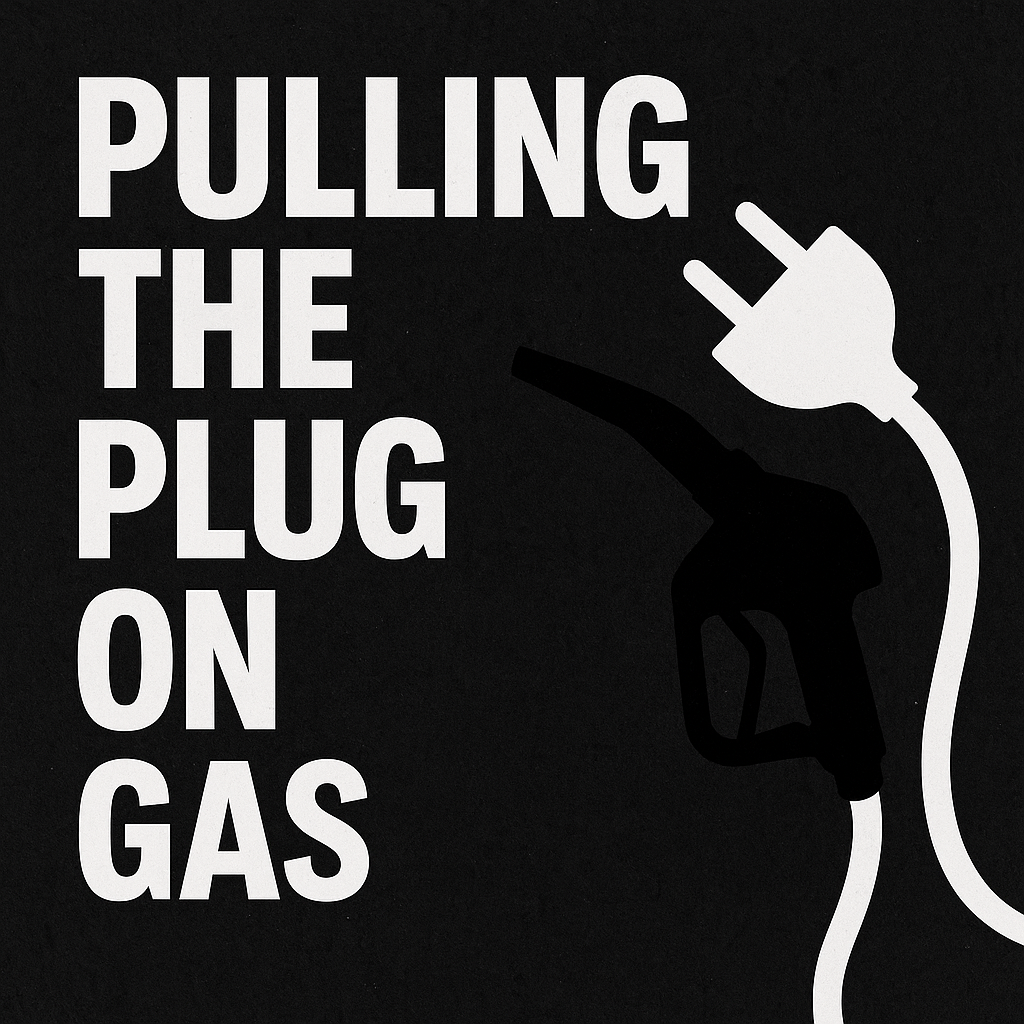How an Old-School Car Guy Came Around to the Electric Revolution
I have always been hesitant to support anything that has to do with battery-powered cars. Why? Because I believe there is a narrative behind it driven by ‘man-made’ climate change fears and a general hatred of the oil industry. And quite frankly, I still don’t believe the politically popular narrative that battery-powered cars are healthier for our environment in any meaningful way. They carry their own eco-footprint, and it’s huge when you consider the factories making the batteries, the energy-intensive mining of lithium and rare-earth elements, and the waste and disposal issues. Also, there is an old-fashioned part of me that loves the gas-guzzling muscle cars from the 60s and 70s—1969 Firebirds, Camaros, Corvettes, Dodge Chargers, Challengers, and so on. I grew up admiring these, owning Hot Wheels versions of nearly all of them. I believe in a free America, and I don’t want the government to take those gas-powered cars away. If people enjoy the smell of gasoline, the ritual of a fill-up at the corner station, and getting dirty inside an engine bay, that is their God-given American right.

12 Years with Battery Tools: No Oil, No Fumes, No Regrets
I’ve always loved technology. I worked in the computer industry for 27 years, ran my own computer manufacturing company for a time, and generally geek out on efficiency and innovation. Over a decade ago, I bought a Kobalt battery-powered lawn mower because it was more convenient than gas. It’s still running fine today. It’s quieter. It starts with a button. It recharges in just a couple of hours. In 12 years, I’ve never once said, “Gee, I wish this were gas-powered. I really miss that gasoline smell and the stains it leaves when I accidentally spill it on my driveway filling up the tank” Nor did I ever say, “Gee, Spring is here and I will not have the enjoyment of changing my lawn mower oil.” Nor did I ever say it wasn’t powerful enough.
Never once did it fail to cut thick or heavy grass. Now, I’m eyeing a newer model with a better mulching feature and self-propelling motor—mostly because my left knee has been acting up. The batteries also happen to work with my leaf blowers, which I liked so much I bought a second one just for the backyard. Just like the mower, they start instantly, are whisper-quiet, and don’t stink.
Why Electric Cars Are Winning Me Over
Fast forward to cars. That same mindset is now shaping how I look at electric vehicles. As I began writing articles for this very blog, I started uncovering just how good some of these lease deals are—and how far EVs have come.
At a recent family gathering, my brother-in-law explained regenerative braking. I hadn’t realized that most EV drivers rarely use their brake pads thanks to this feature. That’s just the beginning. No more oil changes. No spark plugs. No timing belts. No mufflers or exhaust systems to rust out. No emission testing. No pistons slamming up and down 2,000 times a minute. The entire drivetrain is fundamentally simpler. Fewer moving parts. Fewer things to wear out. Fewer maintenance appointments. In many cases, routine maintenance drops to tire rotations, cabin air filters, and brake fluid.
Now let’s talk about technology. EVs are built to be software-first vehicles. Many get over-the-air updates, meaning new features, bug fixes, and even performance improvements can come without visiting a dealership. Driver-assist features, adaptive cruise control, smart regenerative braking levels, route optimization based on charging locations—it’s a digital experience, not just mechanical transportation. Many EVs have 360° cameras, automatic emergency braking, pedestrian alerts, and cabin monitoring. Yes, some gas-powered cars have this too—but many of these safety innovations gained traction only after Tesla and others pushed the envelope.
EV Performance: Speed, Torque, and Instant Power
EVs are quick. Insanely quick. Even budget EVs can deliver torque instantly. There’s no waiting for a transmission to downshift or a turbo to spool up. The Kia EV6 GT goes 0–60 in under 3.5 seconds. The Tesla Model S Plaid is faster than most Ferraris. Even mainstream models like the Chevy Bolt or Hyundai Ioniq 5 feel zippy around town thanks to instant throttle response. Once you experience that silent surge of acceleration, it’s hard to go back.
Now, a personal note. I recently leased a 2025 Kia Sportage Hybrid. Looking back, I might’ve gone full electric—but I also wanted one household car that could comfortably go 450 miles without recharge anxiety. Still, it’s only a matter of time. Battery ranges are increasing, charging networks are expanding, and charging speeds are improving. I’m seeing incredible deals on the Nissan Ariya, Lexus RZ, Kia EV6 and EV9, even some luxury Mercedes EVs. Part of me thinks I should grab one now before the rebates and incentives start drying up.
How Fast is your EV? See 0-60 times of popular EV Cars from the largest 0-60 MPH Database on the internet.
Freedom, Convenience, and the Future
I’ve come to believe that what’s best and most convenient for consumers is ultimately what’s best for the environment. This afternoon, I was sitting by the pool, listening to a neighbor’s gas-powered riding mower and smelling exhaust fumes drifting through the air. The weather was perfect—but that noise and smell made the moment feel… outdated.
Technology evolves. And this time, it’s pulling me along for the ride. Not because of mandates or climate panic—but because it’s just plain better. Better to drive. Better to own. Better to maintain. The great lease deals out there won’t last forever. They’ll get more expensive. But the shift is already happening, one push-button start at a time.
How do EV’s Rate on Reliability vs other Cars?
Are you concerned about the reliability of EVs? Or, perhaps you are just curious. Visit the largest Car Reliability database, cross-referenced, and fully searchable to compare. How Reliable is your EV?
How do EV’s Compare to Hybrids and Gas Fueled Vehicles?
How do EV’s measure up to Hybrids and Gas Cars on economy? What is the actual fuel savings? See the side to side comparison of MPGe vs. MPG and actual costs based on current Gas mileage and Electrical Useage Prices using this free and easy too: EV Efficiency Coverter
